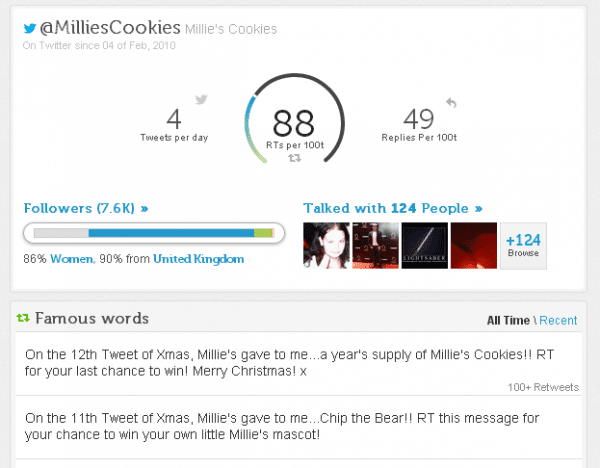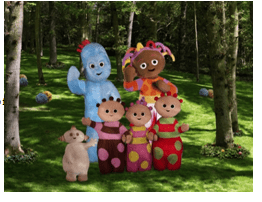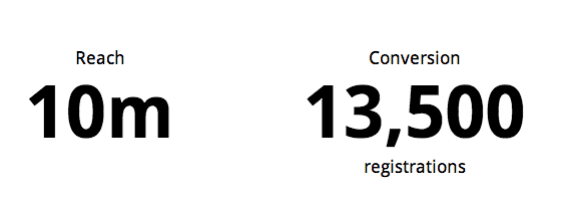10 steps for managing social media marketing leading to sales transactions
How social media interactions can lead to sale has been the focus of many a discussion in recent years as social media has grown to become a major customer touchpoint. Since the VP of Coke recently made the claim that Social did not lead to any significant direct sales for them, this has had the knock on effect of some questioning the power of social marketing.
What I aim to cover in this post is how a focused, stepped approach to social media marketing should be directed towards sales and how you should plan this into your marketing strategy.
What most people assume is that social is not is a direct sales tool. The reason for this is because if you think about a classic sales funnel from Reach, interest, evaluation, conversion, referral and repeat business, then social media marketing normally only influences the reach element i.e. Awareness.
You could compare this to putting up a billboard at a busy train station and exposing the message to 100,000 visitors; you may not receive any direct calls from the advert however you have still reached 100k people. Social is a little bit like this, however it has a number of significant advantages making it a very special tool.
The 10 steps leading to encourage social media transactions
Xcite Digital create social media apps for clients that have a range of short, medium and long-term benefits based on applying the campaign to the sales funnel as described above. Based on the following 10 step process you can create a successful social campaign that is focused on transactional results.
- 1. Profile
- 2. Research
- 3. Email and Data
- 4. Like Gating
- 5. Engagement
- 6. Stickiness
- 7. Conversation
- 8. Registration
- 9. Advocacy
- 10. Transactional
One of the first steps in any successful campaign is to define the types of clients you want to target, use existing data to profile them.
By researching through social insight tools you can analyse the clients social activity to determine ways to market them to gain greater reach with key influencers, or you may find that the target audience is largely female or between 30-45 for example.
This all has an impact on the way you market the client to their social audience, and the way the audience react to your messaging. Compare this to Millies Cookies, by researching that market for topical news stories you can find out that consumers are health conscious, and you can find out how they interact with the product, their buying process i.e. they eat them at peak times so you can tailor your campaigns around these.

Source: Twtrland
It’s also easy to determine that females interact with Millies cookies 4-1 compared to Men. When you work out that their key influencers is Olly Murs you can then combine the two, for example getting promotion from the key influencer as you know it will have a high impact on the female demographic.
You can also find out where the pockets of communities are, when thinking about social it is best to think of many disjointed audiences that are not connected. This is similar to thinking about the top 10 major cities as social networks, they all have your target audience in them, and they are all connected by the people within them, but they are not joined together.
Taking the example of the UK, this is similar to Facebook being London, Twitter being Manchester, and Pinterest being Reading. Your job is to work out the local variation and find the target audience within each city. Then work out how much time and effort to assign to each city; some cities may have a larger percentage of your target audience for example.
Each city will also have groups within them that are made up of your target audience. If you think about this as a group of gym goers and you want to market to them, the best approach probably is not to spam them with brand messaging.
This is the reason that social marketing is not thought of as a direct sales mechanism, you could think of it like this but you would have the normal sales funnel effect where 10 leads to 1.
We are trying to create an inverted sales funnel, where you drop in 1 customer and this leads to many conversions, and in turn many more referrals.
Use social research to find more of the same target audience to talk to them about the app.
The first stage of the campaign is to do your homework. Start by researching the market and really drilling down into the target audience, the sector you’re focusing on, and the major selling points of the brand.
We start by researching the news for relevant topical articles that describe the state of the market.
We follow this up by creating insight around the clients existing social media strategy using a range of tools to highlight areas that the client does not know already, we can then use this to our advantage when marketing to the target audience.
For example we may find out that through topical news research that the market is about to explode in a new way within food markets and there may be a food scare, therefore you want to focus on the advantages of your product over a competitors.
Email data you collect is like the turbo fuel for your car, the more relevant the data the faster you will travel, especially when used to accelerate a social campaign. Start by sending out an email campaign to your data set and explain the benefits of using your social media app or communicating with you on your Social channels .
-
4. Like Gating - A value transaction
The idea here is to incentivise visitors to Like your page by offering them something in exchange i.e. a white paper, prizes, content etc.
The best way then is to offer a value transaction, the nice way of doing things. Giving something in exchange for something else.
If you think back to the gym goers, the best way to talk to them will be to offer valuable information, this could be anything that your research highlights, for example information on the latest healthy food products, the best locations to train etc.
It could be anything to be honest, but the point is that they are gaining benefit from interacting with you, and intern they spread the word to their network. The beauty of this is that your Fan’s network of friends is likely to be made of very a similar demographic and in the same locality, i.e. a high percentage of your target audience and in greater numbers! What could be better.
Engaging fans on your Facebook page is the quickest way of creating an empathy and creating stronger bonds with your community. Ask Fans to upload something to your page, a picture or comment, and even pull in hashtag comments from Twitter or use Facebooks Hashtags.
Respond to the comments you receive and open up friendly dialog with fans, updating social media pages on a regular basis can benefit your engagement scores and being gracious to followers and Retweets also helps build your exposure - SoMe is about creating conversations!
A great way to attract people back to your Facebook book page again and again is to Incentivise Fans, for example you could run a competition where Fans need to come back again and again to see how they are getting on and if they are winning. Be really creative here and as crazy as you like so research what is working well and then apply to your Facebook community.
At its very simplest you could have a voting system where the uploaded pictures, funny hashtag comments or whatever it is that's being voted on gets pushed to the top of your page and are in with a chance of winning. Remember to do this through an App rather than voting with Likes as Liking to vote goes against Facebook’s Terms and Conditions.
Voting gives Fans reasons to come back again and again to see how they are doing in the competition and engage with other Fans on your Wall.
We have found that offering both lower weekly prizes as well as a Grand prize keeps Fans engaged for the longest, and if you’re running a campaign for around a month then you need a strong pull to keep your Fans engaged by offering prizes that means something to them.
A quick way to generate user based content and conversation is through product reviews. People who try your products are far more likely to rave about them if the experience is enjoyably and they have a place to comment.
When launching a product you want to find as many early adopters as possible i.e. people who like to try things as soon as they come out. These types of people like to shout from the rooftops about what’s new and working well for them, and so the best way to engage Fans is by offering free product trials in exchange for a review.
The other reason this is quite powerful is because it offers a great exchange of value, i.e. you’re giving away a sample of your product and recipients are giving their time to write a review. It's a two-way relationship, although you really want to motivate the early adopters to become your early advocates and use them to build your army of evangelists.
Throughout a Facebook campaign you may want to capture the data from your community, or from people who engage with you on Facebook. For example if you want to add your Fans to a mailing list for future marketing purposes.
Some businesses for example may run without having access to their primary customer as they work through an intermediary, west end production companies for example work with the theatres who sell the tickets.
To build up the success of the production company they may want to engage with customers directly through Facebook, and capture email data so they can communicate with their Fans through future campaigns. This gives the production company much greater control over their destiny. You can apply the same approach to most consumer products that are sold through retail outlets for example.
One of the best ways we have found to capture data properly i.e. by requesting permission, is to ask Fans to submit their details in order to receive an incentive, for example a discount voucher or product review, or entry to the grand prize in a competition. This gives a logical exchange again and means that any email campaigns you run will be received and have a much higher conversion rate.
Advocates are your online virtual sales team, they are not to be underestimated. Your job as Community Manager is to engage and incentivise fans on a regular basis so they are singing from the rooftops about how great your products are.
Ask Fans to share your content i.e. competitions with their network, and if you can build this into the competition app then the growth potential of your Fan reach is far higher. What this means is to incentivise Fans you are talking to share your page, or competition with their friends.
The beauty is that if your Fans expose you to their network of friends, as they are made of a very similar demographic then they are much more likely to engage with you.
For example if your product is baby care and your community demographic is females between 25 - 45 then a high proportion of their friends will be in the same age range and of the same sex and more likely to be interested in what you have to offer.
Facebook now has a built-in recommendation feature specifically for this purpose that will give advocates the platform to sing their praises for a brand called Facebook.
One of the best ways to understand the effectiveness of a Facebook campaign is to go full cycle and track offline sales that have been generated. One of the easiest ways to do this is to offer users a unique auto generated voucher code that they can redeem online, and instore.
This then means you can literally work out the precise ROI generated from your campaign, working back from how much the campaign cost you, to how many people you engaged, and how much profit you ended up making after everything was complete.
Bearing in mind you also built a community of fans who are more likely to buy from you since you engaged them, as well as the advocate benefits, and repeat sales that will be generated in the future. You now have more direct sales, and long-term prospects with a community of Fans that are really loyal to you.
An example of applying these principles
Xcite Digital was asked by the BBC to help them market their award-winning television series IN THE NIGHT GARDEN and generate ticket sales to live outdoor shows held throughout the Summer.

ITNG is all about a highly targeted audience that has a short window of opportunity …Young mums who have a 2–4 year old first born. Asking said mums for data about their children’s data had to handled carefully and Securely.
Taking data from existing campaigns we profiled by locality, then created advocacy and loyalty campaigns to drive referrals. This was especially important as the existing data was now out of date as their children had grown older by a year and were out of the target demographic!
A social engagement campaign was run and lots of content was fed into pockets of communities where we knew the target demographic existed. We backed this up by sending out a series of email campaigns to incentivise friends we knew would be within the right target audience. Finally creating and running a range of Facebook CPC adverts.
Everything was driven to our Facebook app that worked seamlessly across all devices but specifically iPhone, the online access of choice for young mums.
Our goal was to increase the value of our fans by increasing the depth of engagement and loyalty, generating incremental purchase behavior, and leveraging the ability to influence Friends of Fans.
Everyone who ended up at the Facebook App had to Like the page to get through, then register their data to be in with a chance to win tickets to the show, the ability to win merchandise, or receive early ticket release.


Thanks to
Robert Walker for sharing his advice and opinions in this post. Robert Walker is the Managing Director of
Xcite Digital a Search and Social Digital agency that has become one of the fastest growing digital agencies in the UK. You can follow him on
Twitter or connect on
LinkedIn





 Thanks to
Thanks to 

